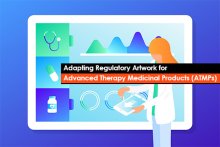In an ever changing Regulatory environment, health authorities around the world mandate drug companies with various drug labeling formats and standards. To comply with those time-critical labeling mandates, organizations find it challenging to create, track and manage various aspects of drug labeling lifecycle.
Right from managing various activities involved in the labeling process like review and approval workflow, global and regional team collaboration, change controlling and deviation management, and mandate-based label amendments, organizations might have to navigate through various business, functional and technical challenges. Before searching for a comprehensive Regulatory labeling framework to address the current day industry complexities, it is perhaps the need of the day to understand the challenges the industry is facing today from various perspectives. Below here we’ve listed out some of them.
Business Regulatory Labelling Challenges:
Delayed & Inconsistent Submissions Across Markets
- Ineffective approval process
- Non-uniform versions of documents
- Undefined turnaround time and quality metrics
- Local systems Vs Centralized systems
Business Continuity
- People dependency leading to challenges in resources continuity
- Resource transition
- Decentralized, un-versioned work packages
Centralization & Harmonization
- Global submissions, artwork and label management
- Global intelligence-driven approach
- Compliance monitoring and business risk management
Non-Compliance
- Lack of process adherence
- Deviation from documented SOPs
- Undefined process documentation
Impact on Patient Safety & Brand Image
- Inconsistency across markets impacting the brand image
- Non-traceability of information
- Slower response to changes in regulations
Productivity, Efficiency & Cost
- Duplication of work, reduced productivity due to lack of traceable metrics, hence increased costs
- Cost of non-compliance
- Approved documents not maintained centrally
- Manual processes such as approval
Functional Regulatory Labeling Challenges:
Process Challenges:
- Establishing GLM processes with CCDS / CCSI and labeling harmonization for Generics is challenging because as per regulations local labeling for generics has to follow innovator labels
- In terms of base / reference documents, for innovator scenario, local labels can follow the CCDS but in the generics scenario. They have to follow the local innovator labels
Guideline-based Challenges:
- Later this year, US FDA will be rolling out the revised guidelines which will require generics to maintain their own safety data, in which case CCDS / CCSI will become more significant
- Following relevant SPC/PI and other labels as RSI
- The common challenge in all approaches (whether hybrid, US or EU format for CCDS/CCSI) is that some markets have their own specific formats that they neither align with EU SPC or US PI (e.g. Japan, Australia, Canada, South Africa). In those countries, it is difficult to compare and to expect them to align whenever a CCDS / CCSI is distributed
- While collecting source documents for CCDS creation for some companies, it is important to check where the product is registered, and get the labels. Prioritization of source documents is important for right information and process efficiency
- While collecting source documents from the markets, there are often challenges in terms of the correct versions, correct procedures etc. to refer to. The process can be time-consuming if the email is used for document exchange.
- From a process POV, it is challenging to track the distribution, the status of local comparison, deviation reporting and any safety variations of local labels due to the CCDS.
Other Challenges:
- Differences in stakeholders understanding of overall expectation from the program
- Individual accountability and that of others within the project team
- Understanding of the dependencies on critical activities, documents, deliverables and project outcomes that can impact the overall project
- Interaction with Multiple stakeholders across the globe
- Complex and varied regulatory requirements across the globe both at the organizational and the Health Authority (HA) levels
- Knowledge gaps
- Frequently changing regional nuances
- Lack of existing work / project instructions and training materials
- Frequent fast-track request in Hyper care phase of the project
- Unavailability of Critical Documents
- Risk Management Plan
- PSUR / PBRER
- PRAC Recommendations
- Bio-equivalence Study Report
- Unable to trace efficacy studies
Technical/Operational Regulatory Labeling Challenges:
- Challenges in CDS creation and deviation tracking
- Document level tracking of deviations and integration with DMS
- Integration of document creation within CDS management for complete workflow
- Automated tool for document creation, document tracking and deviation tracking
- Integration with multiple platforms
- Track changes in CDS
- Deviation reporting and compliance tracking
Having gone through the complete spectrum of industry challenges for Regulatory labeling, the next step organizations must take is to align their own capabilities with that of the industry requirements. If there seems to be a gap for successful compliance, then it requires to opt for a robust Labeling Framework that not only establishes best practices all across, but also implements a fool proof platform that enables compliant-ready Regulatory labeling. Freyr, as a specialized Regulatory partner, offers Global Labeling Xcellence (GLX) Framework. The details will be discussed in the next article. Stay tuned.





